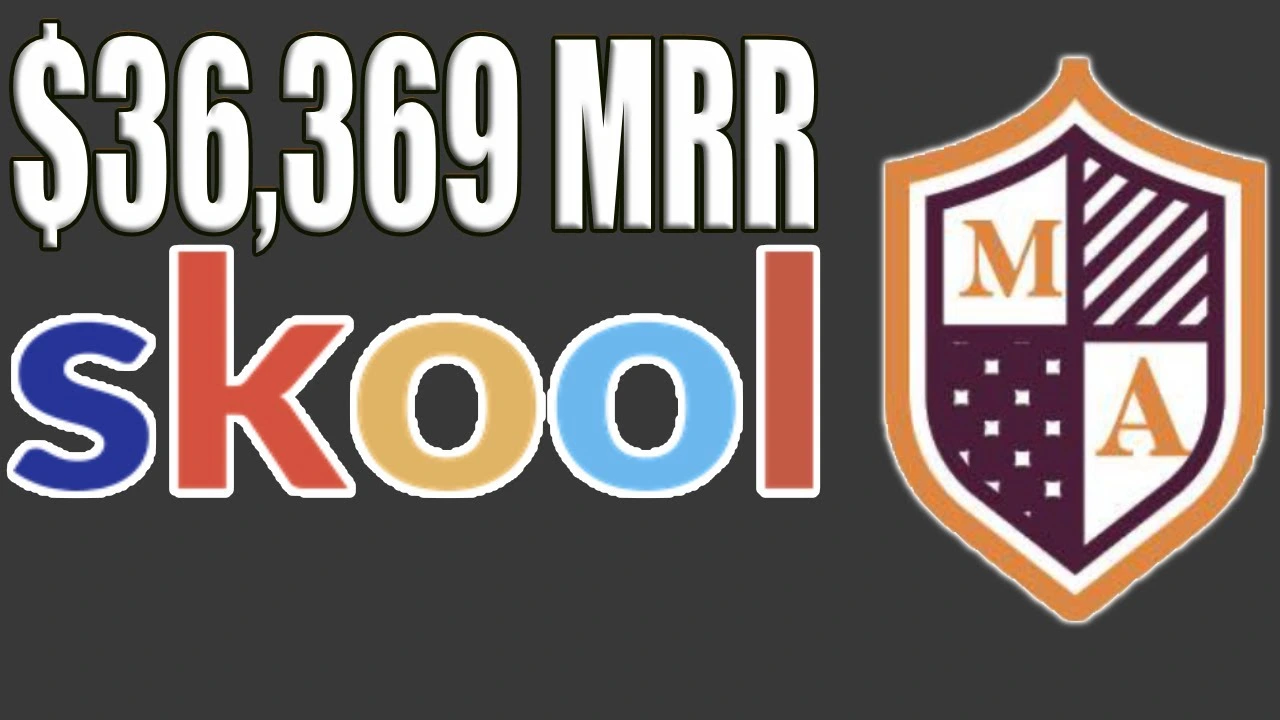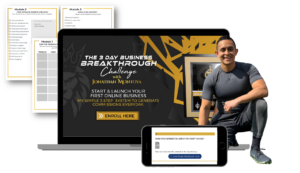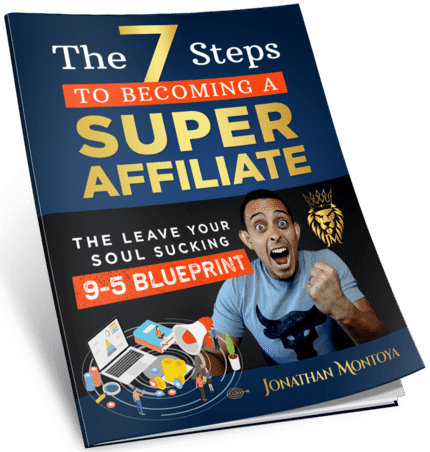How Matisse Academy Makes $36,369 Every Month with His Skool Community
Build a Business With Alex Hormozi
Your Shortcut to Building a Thriving Online Community
Want to make your first dollar online?
Go here Skool Games
Alex Hormozi collaborated with Skool to host The Skool Games — a challenge to help you build your Own Online Business.
Alex Hormozi will be your personal mentor to help you start your own online business and grow it to $10,000+ /month.
You’ll get simple instructions, weekly Q&A calls on Zoom for support, and a community of successful entrepreneurs all collaborating to help each other win.
Here’s how it works:
Sign up for The Skool Games.
Think of something to sell, promote it, and get customers (Hormozi helps with that).
Leaderboards show how much money people are making in real time.
The top 5 in each category win an all expenses paid trip to LA and…
Visit Skool HQ in LA
Hormozi 1-day mastermind
Skool Games trophy
Categories You Can Win in…
Hobbies
Music
Business
Self Improvement
Tech
Health
Careers
Sports
Love
We record the Events and make them available, so you can learn what’s working.
Every quarter there’s a new chance to win.
If you don’t win the first quarter, you’ll learn from the winners in the event recordings and can try again the following quarter.
The Simplest Way To Make Money Online
Led by Alex Hormozi, Skool Games makes building an online community easy, fun, and profitable. Turn your passions or skills into a thriving business with step-by-step guidance and proven strategies.
Co-founded by Sam Ovens, the platform launched in 2019 with a closed beta and has been publicly available since early 2022.
With a steady release of new features and growing customer base, one thing is for sure:
Skool is here to stay.
Who is Skool for?
If you are a:
Business Owner
Coach / Consultant
Educator
Course Creator
Youtuber
And you want to…
Teach or gather together people into a single, distraction and advertisement free community, where you have complete control over all the content these people see.
Then Skool.com might be right for you.
Let’s dissect and review the Skool platform piece by piece, so you can make a well-informed decision whether it’s the right choice for you.
Build Your Community, Monetize Your Passion, and Compete for Big Rewards!
Join the thousands of others building profitable online communities with the Skool Games. It’s fun, risk-free, and packed with training that others charge thousands for—get started today!
Basically, a Skool group consists of four main features:
- Community
- Classroom
- Calendar
- Gamification
Within the community people can engage with each other via posts, likes, comments and direct chat messages:
In the classroom your customers can learn by following your courses/training programs…
Via the calendar you can schedule online and offline events such as recurring calls, webinars and meetups for you and your members…
Gamification awards points to members for each ‘like’ they get on their posts/comments. Reach a certain amount of points and you ‘level up’. Rewards can be linked to each level to boost engagement. Leaderboards show the most active members and rewards for each level…
The community of a Skool group looks like this:
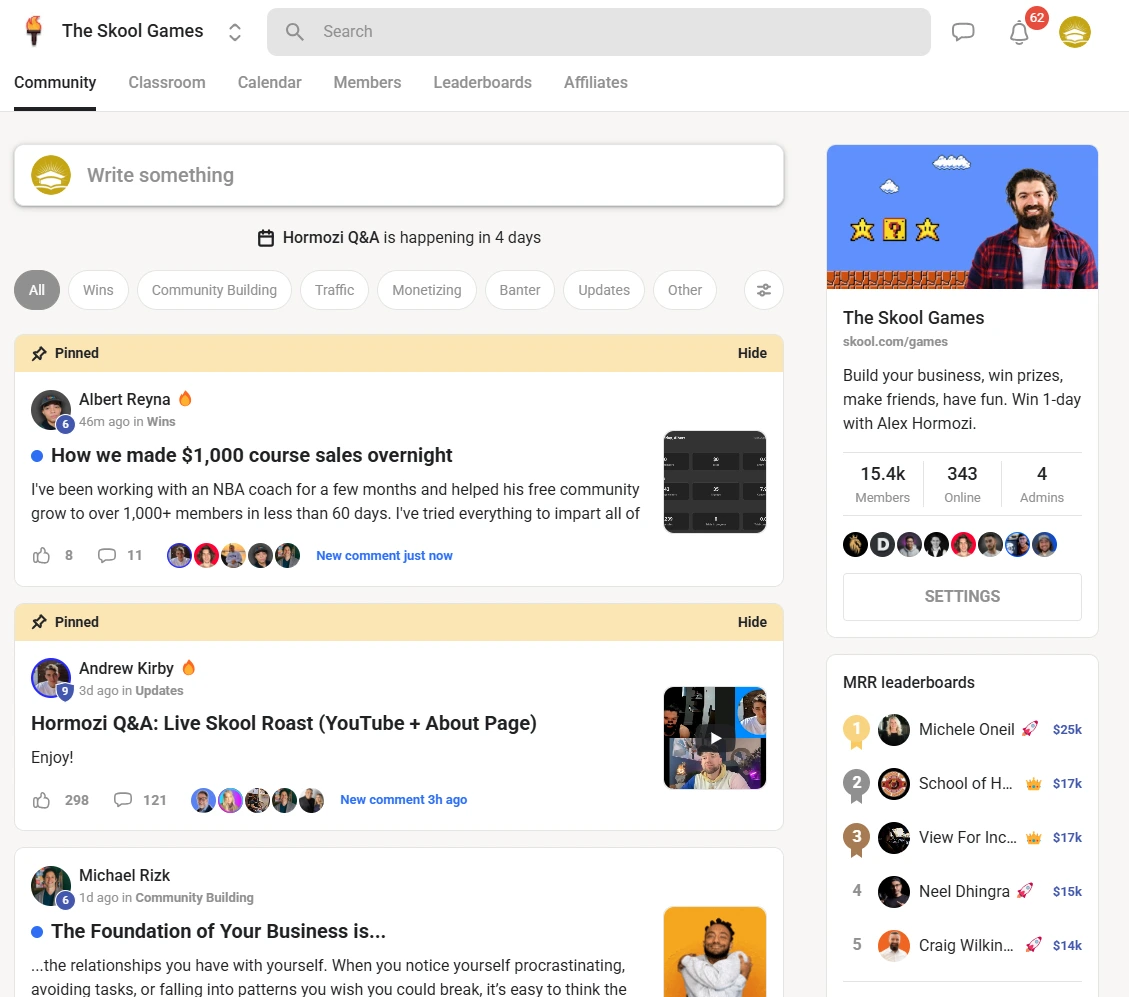
It’s a clean interface, where you can pretty much do two things:
- Post something yourself.
- Read and engage with posts of other members.
(more later on the types of posts you can do in a Skool community)
Here’s a screenshot of your average Facebook group:
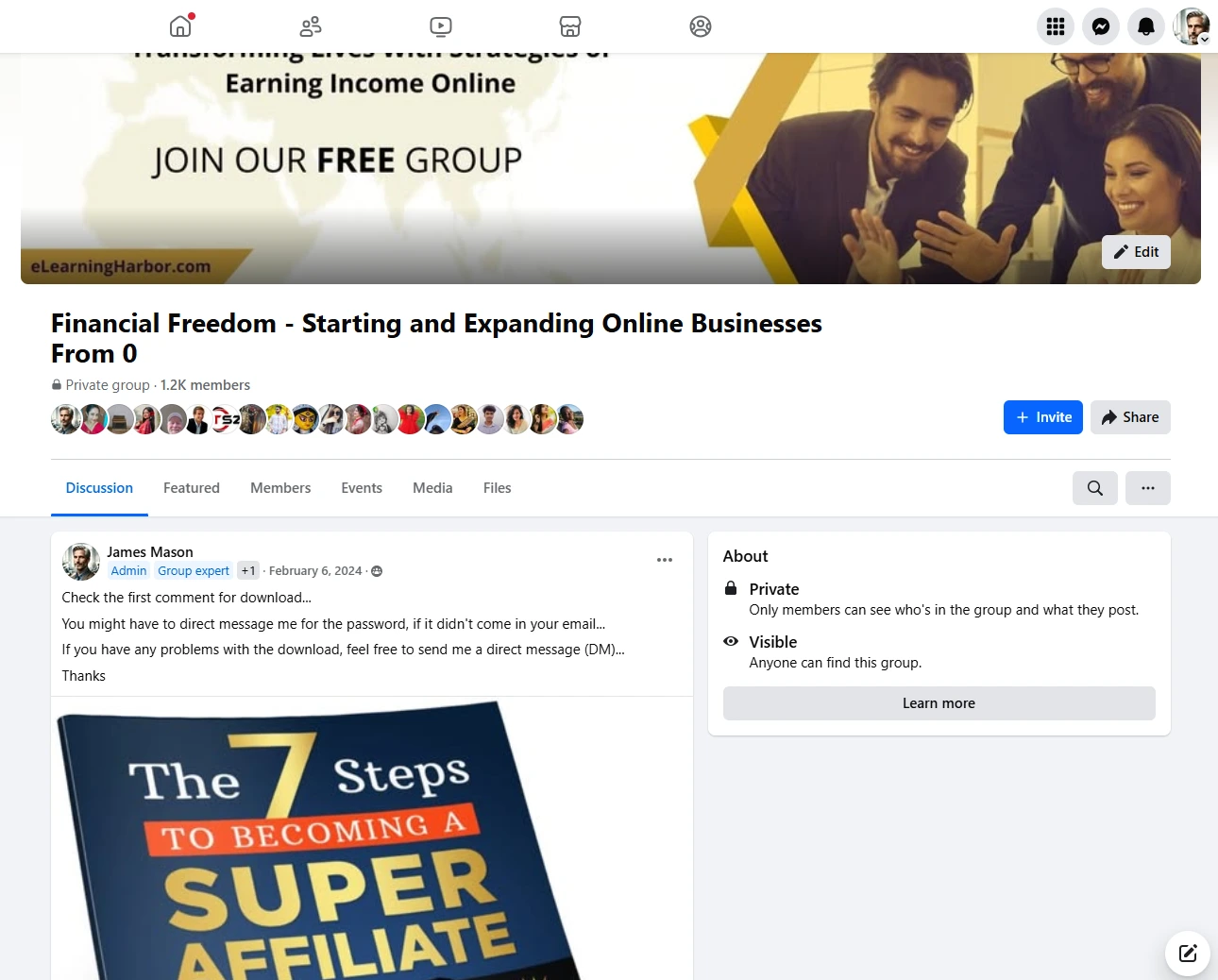
They look similar and you can post/engage with other people’s posts in a Facebook group too.
But on Facebook, there’s always so much going on.
Visiting Facebook and navigating to your group feels like navigating through a busy shopping street.
Something or someone is always fighting for your attention.
Posting in a Skool community
Both members and admins can post in a Skool community
You can attach files, images, GIFs and videos (YouTube, Vimeo, Loom, Wistia, or Bunny.net) to your post. It’s possible to run polls too.
When posting something, you do so in a specific category.
This helps to keep posts organized. Your members can easily view posts by category via pill menu and use the filter button to sort posts, which is handy for finding specific information quickly.
User profiles, chat and notifications
Each community member also has a public profile page:
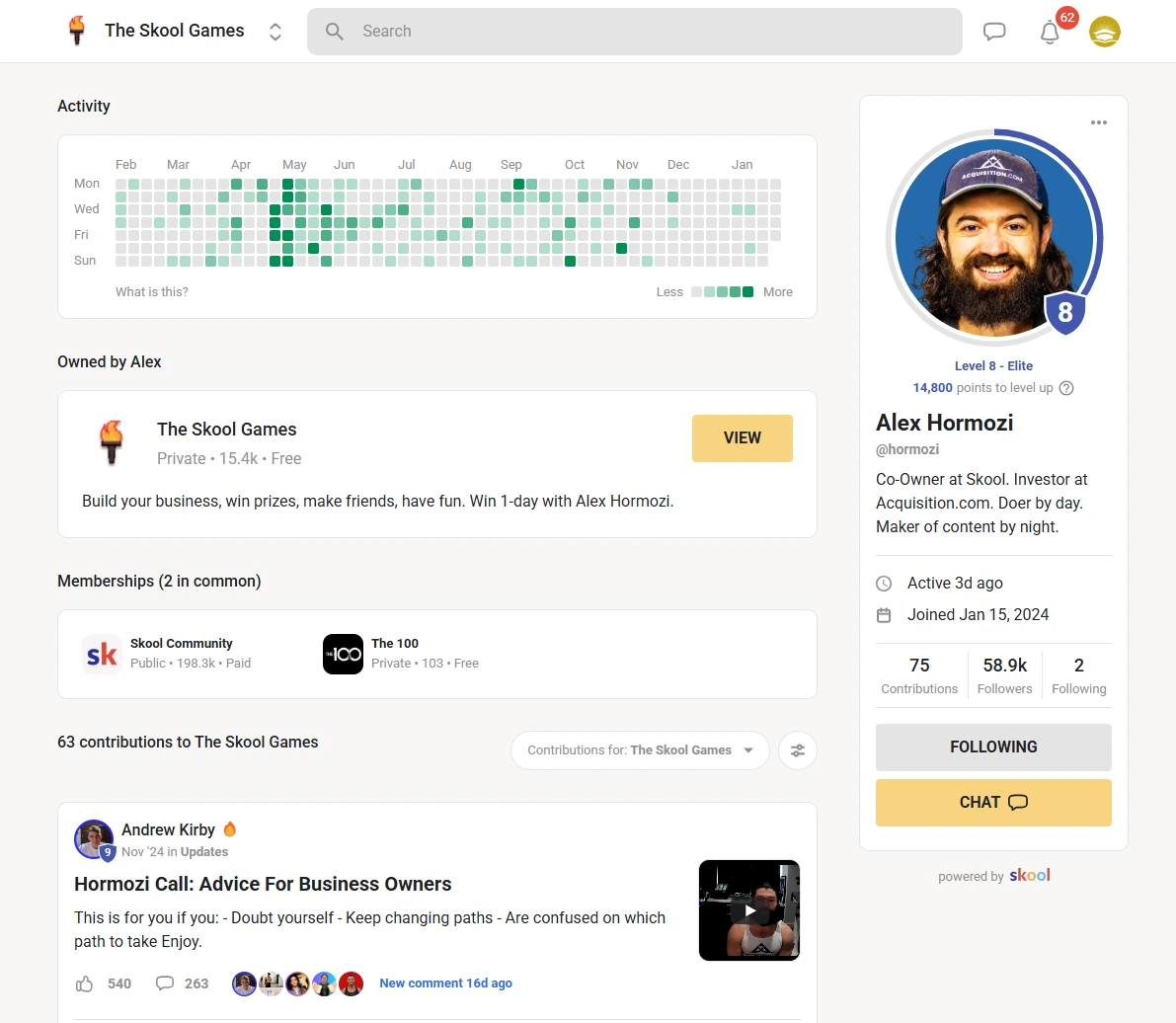
On a profile page you can see:
- All community activity of that person, like what they posted and when, and what they commented on posts by other people
- Groups created by this person (can be hidden on group level)
- Groups they are a member of (can be hidden on group level)
Following someone means you get notified whenever that person posts.
Besides that, you can start a 1-on-1 chat (there currently is no group chat feature).
The Simplest Way To Make Money Online
In this video, I’m going to review the simple four-step process that Matisse Academy takes to make $36,390 in monthly recurring revenue with his Skool community, Matisse Lawful Community.
It is a simple four-step process that literally anybody can do to make money online.
I’m going to reveal it here for you today.
If you want to get started with your Skool community, I have a link in the description to a two-week free trial.
It is an affiliate link.
If you get started using my affiliate link, as an added bonus, I’ll meet with you one-on-one to help you grow your community.
Without further ado, let’s get into the simple four-step process that literally anybody can do.
Step number one is to pick a niche.
It’s really important to focus on one niche.
Don’t focus on two completely different niches.
Most people go to the internet to solve one problem at a time.
You want to be known as a one-problem solver.
Think about everyone who has built a massive following.
In the beginning, they started by solving one problem.
With Matisse and their lawful community, they provide legal advice, which is really cool.
It falls under the wealth niche because they help people save money by providing legal advice.
I want to show you that they are making $36,390 per month so you can see that for yourself.
This is their Skool community.
They charge just $27 per month.
You can see that they are helping people with topics like beating child support, getting out of traffic tickets, managing civil debts, and handling misdemeanors.
They are providing legal advice.
If you thought you couldn’t have a community offering legal advice, this is proof that you can.
Step one is to identify a niche or target audience that you want to serve.
I cannot emphasize this enough.
People go to the internet to solve one problem at a time.
You want to be known as the one problem solver.
The next step is to figure out where you’re going to get attention.
There are so many different places on the internet where you can get attention.
In the very beginning, pick one place.
You don’t need to be everywhere.
Just pick one place where you can get attention.
There are two types of attention: free attention and paid attention.
The benefit of free attention is that it doesn’t cost you any money.
It only costs you time.
The drawback of free attention is that it can take longer to see results.
You have to build a community and establish trust organically.
The alternative is paid attention.
The paid route is great because you can see results much faster.
However, it’s going to cost you money.
If you don’t have money upfront to invest, you’ll probably want to stick with the free route.
Some of the most common platforms for attention are YouTube, LinkedIn, Instagram, Facebook, Twitter, TikTok, and podcasts.
You can even use a book funnel, which I talked about in my last video.
Looking at Matisse, he has a presence on Facebook.
He also has a presence on YouTube.
You can see he has 27,000 subscribers.
He is repurposing his videos across multiple platforms.
If we look at his Reels, they are essentially the same videos everywhere.
This allows him to be in multiple places at once.
He also has a decent following on TikTok.
Again, he is repurposing his content across platforms.
What you need to do is identify one platform to start with.
For example, YouTube gets billions of users every month.
You don’t have to be everywhere.
Just focus on one and move on to the next step.
Once you identify where you want to create content and how you will get attention, the next step is to create content.
There are different types of content.
One type is SEO or search engine-optimized content.
This content is based on the questions your target audience is asking.
Another type is results-driven content, where you show your results, client results, or lifestyle.
Another type is personal branding.
Finally, there is educational content.
Looking at Matisse, he is providing both information and education.
In some of his videos, he talks to clients and shares testimonials, showing results.
He is doing a combination of all three: education, results, and personal branding.
With personal branding, it can be a mix of multiple content types.
As long as you are in the video discussing your knowledge, skills, and experience, you are building a brand.
He is repurposing content across multiple platforms to maximize attention.
It seems he is primarily using results, personal branding, and education to engage his audience.
He is likely not focusing on SEO, at least not in a structured way.
Some of his content is personal, such as “Daddy-Daughter Time” and “Daddy Does Hair Too.”
This type of content humanizes him and shows that he has a real life and real challenges.
He is doing a good mix of personal and educational content.
The final step after deciding where to create content is to funnel people in a direction.
It’s great to get attention and create content, but if you’re not funneling people somewhere, you won’t make money.
Many people make the mistake of building a huge following but not monetizing it because they don’t funnel their audience anywhere.
There are different ways to funnel people in a direction.
You can run paid ads and send traffic to a paid Skool community.
You can create content and send people to a landing page to collect their name and email for email marketing.
The first email should include a lead magnet and a link to join the Skool community.
Another option is to create content leading to a free Skool community and then upgrade members to a paid Skool community.
You can also create content and send people directly to a paid Skool community.
For example, you could use Instagram content and include a link that takes viewers to a paid Skool community.
Another option is to funnel people from a Facebook group to a Skool community.
Now, let’s talk about what Matisse is doing.
He creates content and then directs people to his website.
His website functions like a Linktree.
Personally, I’m not a fan of Linktree-style pages, but this is how he funnels people.
When you click the first link, it takes you to an application page where people can apply to join.
This is how he funnels people into his Skool community.
You can see that he has multiple links, but one leads directly to his Skool community.
When you click “Get Started,” you enter your name and email.
On the next page, you can pay the $27 per month membership fee.
This is his funnel strategy.
If we look at his Linktree-style page, it is more optimized for mobile.
I personally don’t like the way it looks, but this is how he is funneling traffic.
He creates content, collects email addresses, and directs people to his offer.
Once again, if you want to get started with your own Skool community, click the first link in the description.
It is a two-week free trial where you can test out Skool for free.
- The No-Tech Guide to Digital Product Success: Why Being “Tech-Challenged” Might Be Your Greatest Advantage
- Udemy Isn’t Just a Marketplace—It’s a Business Launchpad
- From Broke to Booked: My Long-Term Strategy for Course Sales on Udemy
- The Smart Way to Turn Udemy Into a Lead Machine for Your Business
- How to Use Udemy to Build a Long-Term Digital Brand—Not Just One-Off Sales
- Faceless, Friendless, and Still Getting Paid—The Facebook Hustle
- Beyond Quick Fixes: Using AI to Establish a Long-Lasting Digital Product Business
- The Side Hustle That Actually Worked: A Real Story About Selling Digital Products
- This “Hidden Post” Strategy Is Selling Digital Products Like Crazy
- The Low-Key Facebook Strategy That Still Works in 2025
PayPal / MasterCard / Visa
